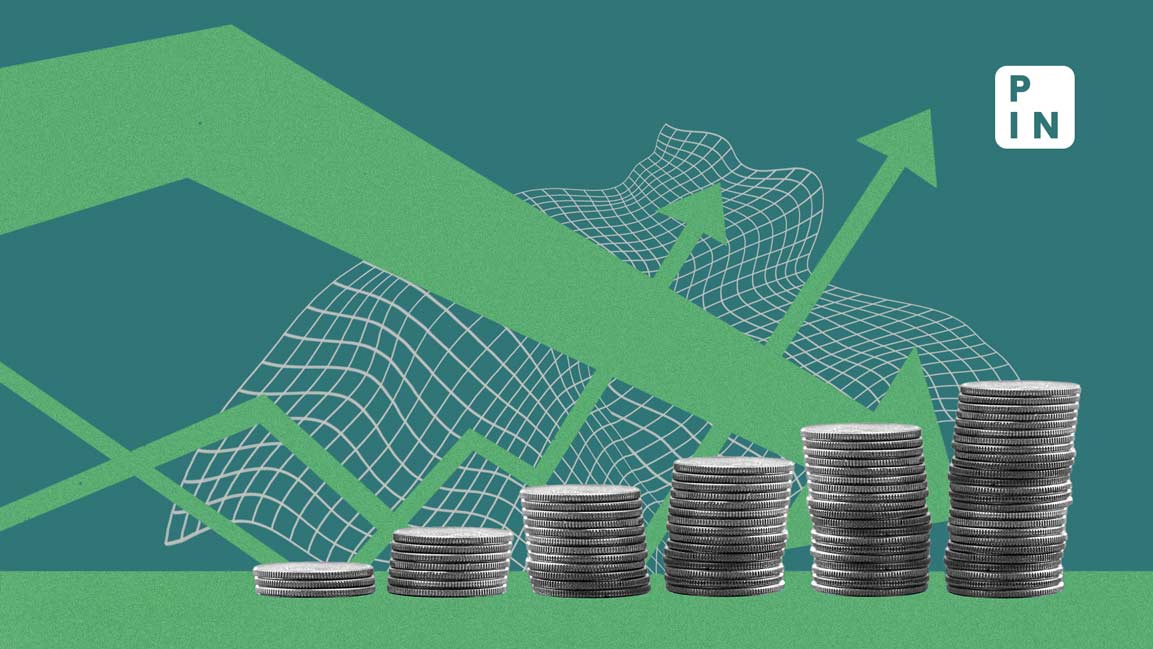- | 5:30 pm
Trade gap shrinks to 11-month low, wholesale inflation rises
Macroeconomic data from the past week showed mixed trends with retail inflation easing in March, wholesale inflation increasing in the same month and factory output accelerating in February

India’s trade deficit shrank to an 11-month low of $15.6 billion in March on a wider decline in imports than exports, trade ministry data showed on Monday.
Imports declined by 6% to $57.28 billion in March, while exports fell 0.7% from a year ago to $41.68 billion.
Notably, petroleum imports declined about 4.40% year-on-year to $17.2 billion during the month.
Fiscal 2024 ended with the highest monthly merchandise exports of the year in March, totaling $41.68 billion.
Non-petroleum and non-gems and jewelry exports rose by 1.45% from $315.64 billion in FY2023 to $320.21 billion in FY2024. Key drivers of exports during the fiscal were electronic goods, drugs and pharmaceuticals, engineering goods, and iron ore. Exports of electronic goods surged by 23.64% from $23.55 billion in FY2023 to $29.12 billion in FY2024.
Drugs and pharmaceuticals exports grew by 9.67% from $25.39 billion to $27.85 billion. Engineering goods exports increased by 2.13% from $107.04 billion to $109.32 billion.
Agricultural commodities showed notable growth, including tobacco (19.46%), fruits and vegetables (13.86%), meat, dairy and poultry products (12.34%), spices (12.30%), cereal preparations & miscellaneous processed items (8.96%), oil seeds (7.43%), and oil meals (7.01%).
The overall trade deficit improved significantly by 35.77%, decreasing from $121.62 billion in FY2023 to $78.12 billion in FY2024. The merchandise trade deficit narrowed by 9.33% to $240.17 billion.
Silver imports surged by more than a 1,000% for yet another month in March. Their import value for the month was recorded at $816.59 million, up 1,059% from $70.47 million a year ago.
Imports of pulses, project goods and sulphur grew, while exports of handicrafts saw a 130% jump.
Wholesale inflation
Meanwhile, wholesale inflation rose mildly, but to its highest level in three month, at 0.53% in March, commerce ministry data released on Monday showed.
In March, the yearly inflation rate for primary articles in the WPI rose slightly to 4.51% from 4.49% in February. The yearly inflation rate for fuel and power in the WPI improved in March, showing a decrease of 0.77%, compared to a decrease of 1.59% in February.
The yearly inflation rate for manufactured products also improved, showing a decrease of 0.85%, better than the decrease of 1.27% in February.
For the fiscal year to March, wholesale inflation decreased by 0.7%, which is much lower compared to the 9.41% increase seen the previous year, data showed.
Ratings firm ICRA said it expects the WPI inflation to harden to 1.0-1.5% this month, owing to the recent uptick in global commodity prices, including crude oil, as well as an unfavorable base effect of -0.8% in April last year.
Retail inflation
The Consumer Price Index (CPI)-based inflation moderated to 4.9% in March from 5.1% in February, while the Index of Industrial Production (IIP) accelerated to a four-month high of 5.7% in February aided by a favorable base, and the Wholesale Price Index (WPI)-based inflation rose to a three-month high in March.
CPI inflation shows how the prices of food, clothes, and other everyday items change for regular people, while WPI inflation looks at how prices change for goods that businesses buy and sell in large amounts.
Core inflation remained subdued and moderated marginally to 3.3% in March from 3.4% in February, consistently staying below the 4% threshold for four consecutive months, data released on Friday showed.
Core inflation measures the change in prices of goods and services but excludes those from food and energy sectors as their prices can be volatile due to weather changes and oil supply issues.
Food inflation persisted at elevated levels despite marginal deceleration, led by double-digit growth in vegetable, pulse, spices, and egg prices. However, the food inflation outlook has improved with increased acreage in rabi sowing and expectations of a normal monsoon with a waning El Niño condition, Care Edge said in its report.
“External risks to inflation have intensified on an uptick in global prices of industrial metals and Brent crude oil. Overall, we expect inflationary pressures to ease in the coming months, supported by a favorable base and the government’s supply-side interventions. We anticipate the monetary policy committee will contemplate rate cuts in the third quarter of FY25,” it added.
“Looking ahead, a favorable base effect is expected to persist until July, helping mitigate potential upward price pressures. However, it’s crucial to note that external risks to the inflationary outlook have intensified,” Rajani Sinha, chief economist at Care Edge, wrote in a note.
Factory output
Meanwhile, growth in industrial output increased, supported by a broad-based acceleration in growth across the mining, manufacturing, and electricity sectors with the base-effect at play.
The consumer goods segment continued to show a mixed picture. While consumer durables output rose by 12.3%, aided by a favorable base, output of consumer non-durables fell 3.8% staying in the decline zone for a second month. However, rural demand has been showing some signs of improvement as seen in the sales of two-wheelers and packaged consumer goods volume growth in rural areas.
“Thus, we could see some improvement in the performance of consumer goods segment in the coming months. The moderating price pressures and prospects of a normal monsoon remain positives for the consumption scenario going ahead,” Sinha added.












